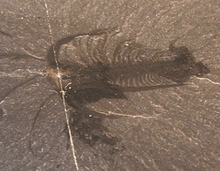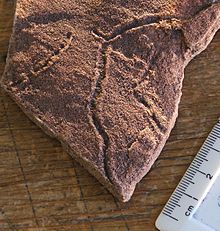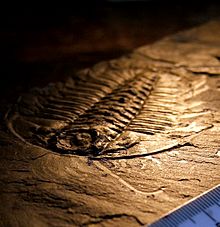Megaevolution facts for kids
Megaevolution is a term that describes the biggest and most important changes in evolution. It's not a different type of evolution, but rather a way to talk about changes that have a huge impact on life. While "macroevolution" can mean smaller changes, "megaevolution" is used for truly massive shifts in the history of life.
Think of it like this: if evolution is a journey, megaevolution is when life takes a giant leap forward, completely changing direction or reaching a new level. These big changes have shaped the world we live in today.
Big Jumps in Life's History
Scientists have identified some incredible moments of megaevolution. For example, the rapid spread of birds in the Lower Cretaceous period, teleost fish (most modern fish) in the Cretaceous, and flowering plants in the Upper Cretaceous. After the dinosaurs disappeared, mammals also had a huge burst of evolution in the Eocene period. These are all examples of life diversifying and taking over new spaces.
Two scientists, Maynard Smith and Szathmáry, made a list of what they called "the major transitions in evolution." These are moments when life changed in truly fundamental ways.
Major Transitions in Evolution
Here's a simplified look at some of their ideas:
- From simple molecules to early cells: The very first self-copying molecules eventually became organized into tiny, simple "protocells."
- From separate parts to organized DNA: Independent bits of genetic material came together to form chromosomes, which are organized packages of DNA.
- From RNA to DNA and proteins: Early life used RNA for both genetic information and to do work. Later, DNA became the main way to store genetic information, and proteins became the main "workers" in cells.
- From simple cells to complex cells: Simple bacterial cells (called prokaryotes) evolved into more complex cells (called eukaryotes). These new cells had a nucleus and other special parts called organelles inside them. This big step likely happened when one simple cell took another simple cell inside it, and they started living together!
- From copying yourself to sexual reproduction: Organisms that just made exact copies of themselves (asexual clones) started to develop sexual reproduction. This mixes up genes and helps life adapt faster.
- From single cells to many cells: Single-celled organisms evolved into multi-celled organisms, leading to all the complex fungi, plants, and animals we see today.
- From individuals to super-societies: Some animals, like termites, ants, and bees, evolved from living alone to forming huge colonies where some individuals don't reproduce but help the group.
- From early societies to human language: In primate societies, the ability to communicate developed into complex human language.
The first six points on this list happened very, very long ago, even before we had a good fossil record of life. The changes from single cells to multi-celled organisms, and the origin of complex cells, were incredibly rare and important events.
The Cambrian Explosion
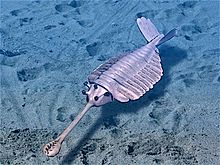
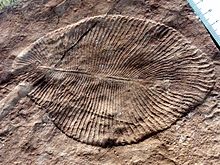
One of the most famous examples of megaevolution is the Cambrian explosion. This was a time about 530 million years ago when most major groups of animals (called phyla) suddenly appeared in the fossil record. It was a period of incredibly fast evolution!
Before about 580 million years ago, most living things were very simple. They were either single cells or small groups of cells living together. But over the next 70 to 80 million years, the speed of evolution increased dramatically. By the end of the Cambrian period, almost every major animal group we know today had appeared. Life on Earth started to look much more diverse, similar to how it is now.
The Cambrian explosion has been a big topic of discussion among scientists. Even Charles Darwin, who developed the theory of evolution by natural selection, wondered about this sudden appearance of fossils. It seemed like a challenge to his ideas, but scientists continue to study it and learn more about this amazing period of megaevolution.
See also
 In Spanish: Megaevolución para niños
In Spanish: Megaevolución para niños


